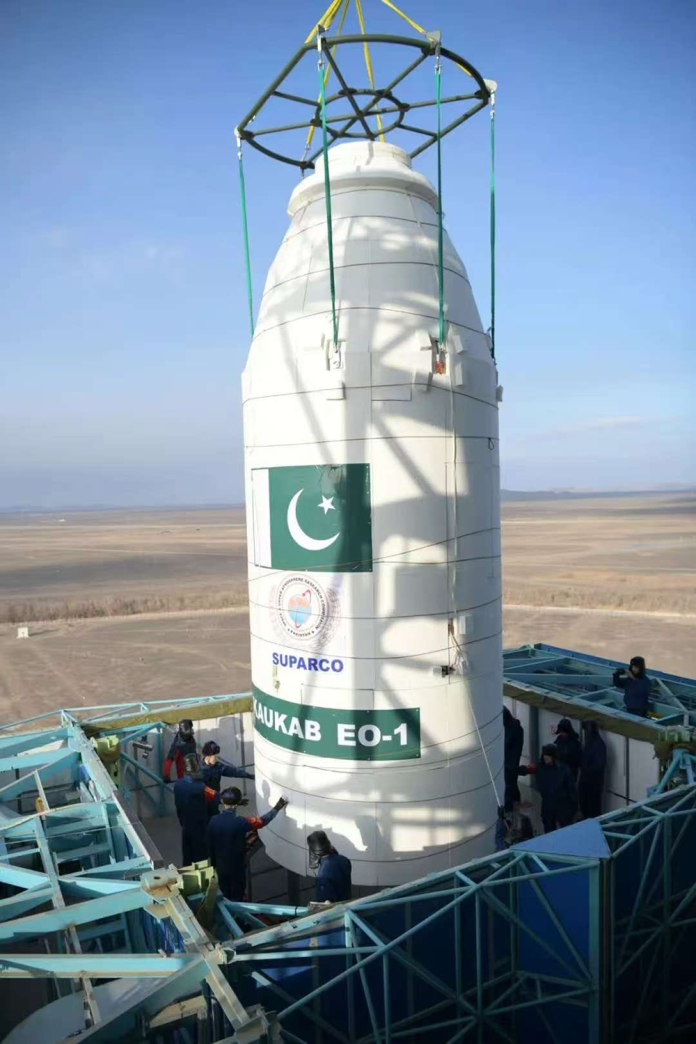in a significant collaboration between the China National Space Administration (CNSA) and Pakistan’s Space & Upper Atmosphere Research Commission (SUPARCO), the indigenous EO-1 satellite was successfully launched. This launch took place at the Jiuquan Satellite Launch Centre in China, utilizing the Long March 2D (LM-2D) rocket.
The EO-1 satellite, a product of Pakistan’s own technological prowess, is set to enhance the nation’s capabilities in earth observation and resource management.
On Saturday, the Chinese Embassy in Pakistan extended its heartfelt congratulations in an official statement, underscoring the success as a testament to the robust and growing partnership between the two nations. The statement highlighted the deepened cooperation and mutual achievements in the realms of space exploration and technological advancement. The EO-1 satellite employs electro-optical sensors to collect data and images of the Earth’s surface by detecting and measuring reflected sunlight or emitted radiation
According to SUPARCO, the satellite will enhance Pakistan’s ability to monitor and manage natural resources, respond to disasters, and improve urban planning and agricultural development. “This remarkable milestone marks a giant leap forward in Pakistan’s journey towards self-reliance and technological excellence in space exploration,” SUPARCO stated.
The agency highlighted that the satellite provides invaluable insights across various sectors. It supports precision farming, irrigation management, and crop yield prediction, significantly enhancing agricultural efficiency. Additionally, the satellite aids in monitoring infrastructure growth and managing urban sprawl, ensuring well-planned urban development. It also plays a crucial role in tracking deforestation, glacier recession, and water resources, contributing to environmental conservation efforts. Moreover, the satellite delivers timely updates on natural disasters such as floods, landslides, and earthquakes, enabling effective and swift response measures to mitigate their impact.
Furthermore, the satellite will assist in monitoring and conserving natural resources, including minerals, oil, and gas reserves. These capabilities make the satellite a vital tool for sustainable development and informed decision-making. The successful launch represents a crucial step in Pakistan’s journey towards space technology.
In addition to the PRSC-EO1, China’s Long March-2D carrier rocket also launched two other satellites, Tianlu-1 and Blue Carbon 1, into orbit, as stated by the China Aerospace Science and Technology Corporation.


